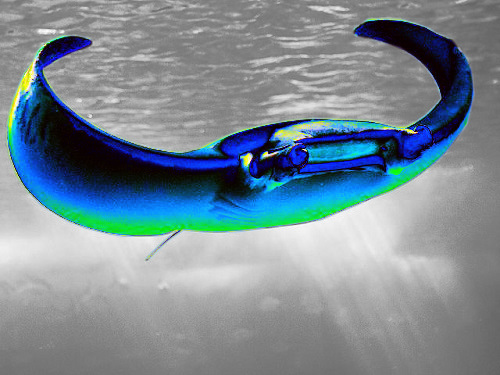Heart cells used for stingray robot
 Engineers have again dipped into nature’s design book, with the development of a tissue-based soft robot that mimics the biomechanics of a stingray.
Engineers have again dipped into nature’s design book, with the development of a tissue-based soft robot that mimics the biomechanics of a stingray.
UCLA bioengineering professor Ali Khademhosseini led the development of the latest in bio-inspired robotics.
The simple body design of stingrays - a flattened body shape and side fins that start at the head and end at the base of their tail - makes them ideal to model bio-electromechanical systems on.
The 10-millimetre long robot is made up of four layers: tissue composed of live heart cells, two distinct types of specialised biomaterials for structural support, and flexible electrodes.
Imitating nature, the robotic stingray is even able to ‘flap’ its fins when the electrodes contract the heart cells on the biomaterial scaffold.
“The development of such bioinspired systems could enable future robotics that contain both biological tissues and electronic systems,” Dr Khademhosseini says.
“This advancement could be used for medical therapies such as personalised tissue patches to strengthen cardiac muscle tissue for heart attack patients.”
The robot can be seen in action below.
More information is available in a study published in Advanced Materials.








 Print
Print